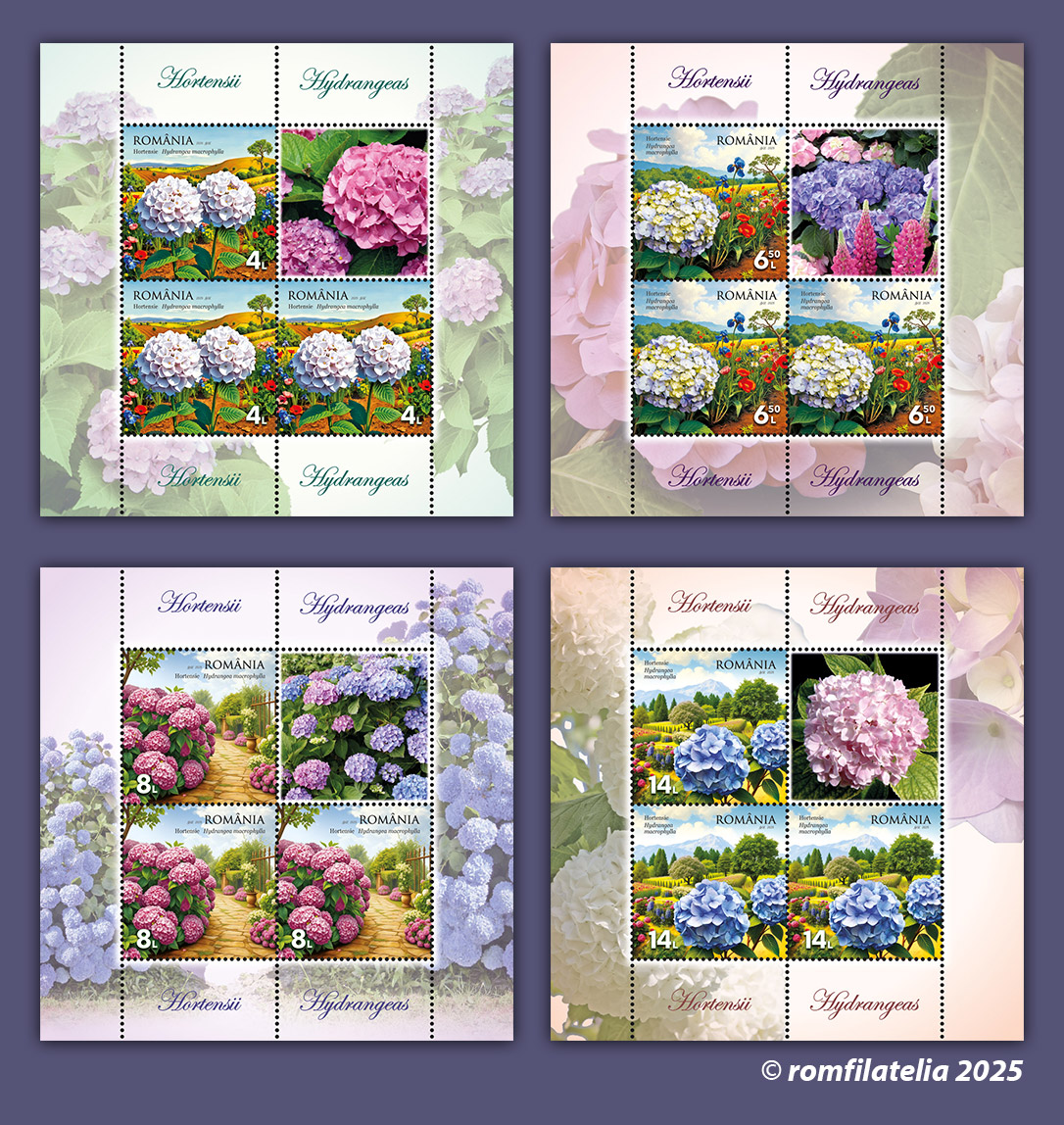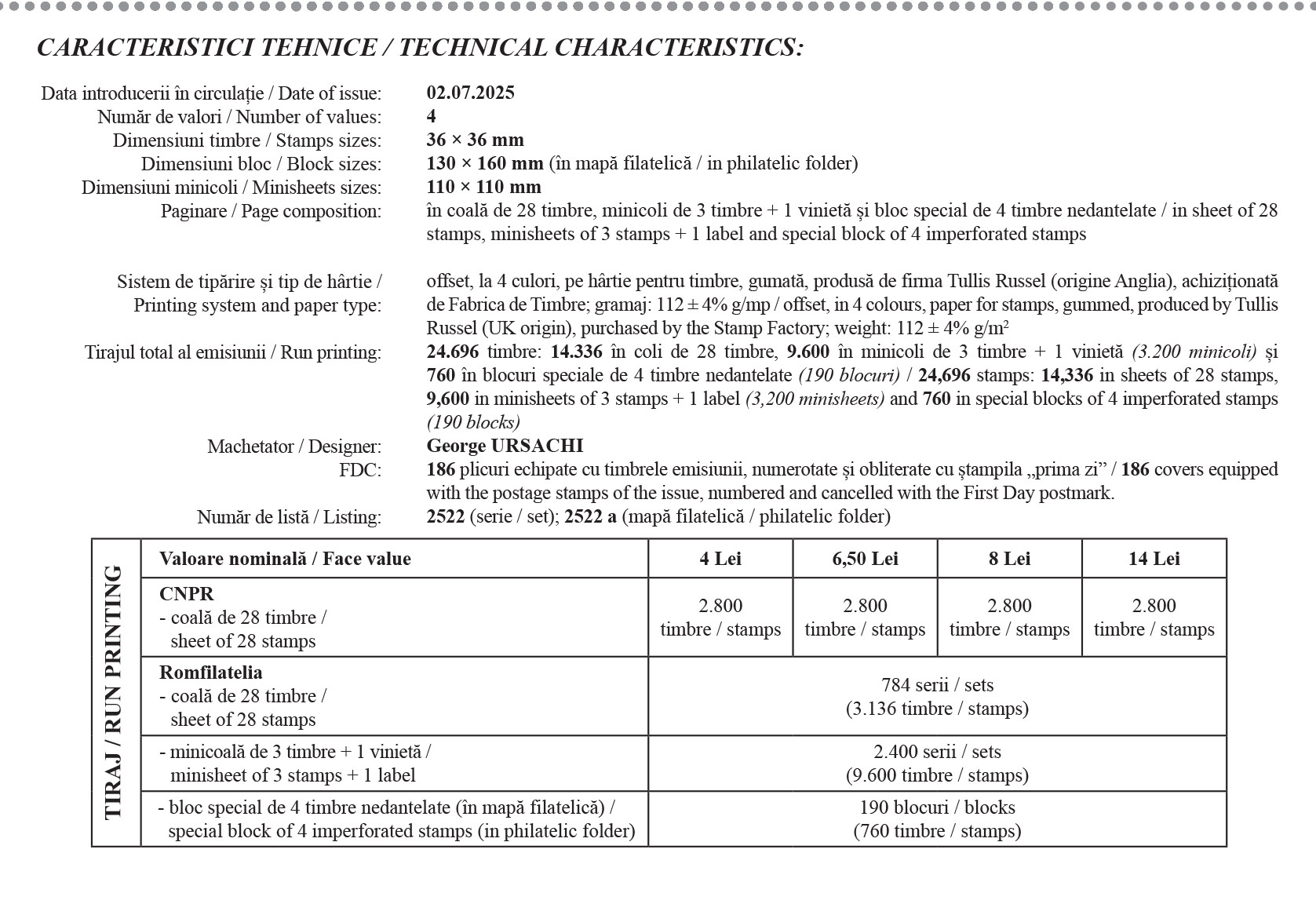 As part of the general FLORA theme, Romfilatelia has included the philatelic issue titled Hydrangeas, consisting of four postage stamps, a First Day Cover and a philatelic folder with a special product in limited run printing which will be introduced into circulation on Wednesday, July 2nd of this year.
As part of the general FLORA theme, Romfilatelia has included the philatelic issue titled Hydrangeas, consisting of four postage stamps, a First Day Cover and a philatelic folder with a special product in limited run printing which will be introduced into circulation on Wednesday, July 2nd of this year.
The stamps of the philatelic issue (with the face values of Lei 4, Lei 6.50, Lei 8 and Lei 14 respectively) depict images of various flowers of the Hydrangea macrophylla species, highlighting the shape of the inflorescence and the shades of colour.
Hydrangea macrophylla, or hydrangea (the Latinised version of the French given name Hortense, in honour of astronomer and mathematician Nicole-Reine Lepaute, as proposed by botanist Philibert Commerson), is an ornamental shrub in the Hydrangeaceae family.
Originally from Japan and China, the hydrangea initially spread to Central and South America, and later being cultivated in areas on all continents.
The plant’s flowers appear in mid-spring and last until the end of summer, and depending on weather conditions, they can persist until mid-September.
In our country, the most well-known Hydrangea species are: the smooth hydrangea the panicled hydrangea and large-leaved hydrangea.
The smooth hydrangea (Hydrangea arborescens) is a variety of shrub known for its large, spherical inflorescences in shades of white, pink, or even green. The rounded crown typically reaches heights of 1-3 metres. The leaves are oval with serrated edges. It prefers locations with alternating sun and shade. It adapts well to a wide range of soil conditions, and the colour of the flowers is not affected by the soil’s acidity or alkalinity.
The panicled hydrangea (Hydrangea paniculata), originally from south-eastern China, is a large-sized shrub characterised by its large, cone-shaped flowers. The blooms start out white, gradually turning a delicate pink, and eventually a strawberry red toward the end of summer. In addition to landscaped gardens, it is also suitable for planting in large pots on terraces and balconies. It prefers soils with low acidity.
The large-leaved hydrangea (Hydrangea macrophylla) has rich flowers, usually in various shades of pink, blue, purple, white, colour influenced by the soil’s acidity or alkalinity; acidic soil promotes the appearance of blue or light purple flowers, while alkaline soil favours pink and red flowers.
It originates from Japan and Southeast Asia and is adaptable to various soil types, which has contributed to its wide distribution.
The shrubs reach a height of 1 to 1.5 metres, depending on growing conditions. Generally, they require more water. They withstand low temperatures and are resistant to plant diseases. The plant’s fragrant flowers appear in June and bloom until the end of August.
The First Day Cover features a floral arrangement matching the image of a beautiful garden space.
Romfilatelia thanks Prof. Paulina Anastasiu, Ph.D., Manager of the ‘Dimitrie Brandza’ Botanical Garden of the University of Bucharest, for her documentary support in the development of this postage stamp issue.









